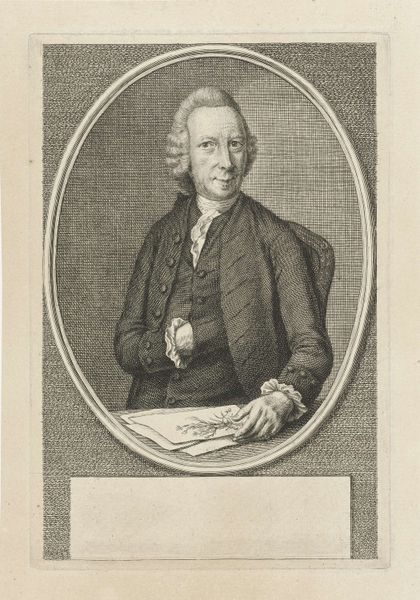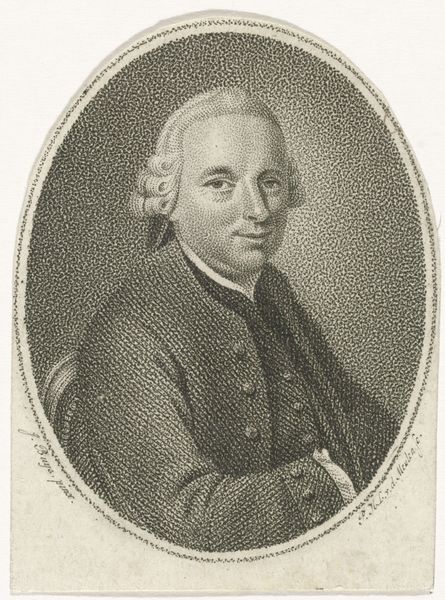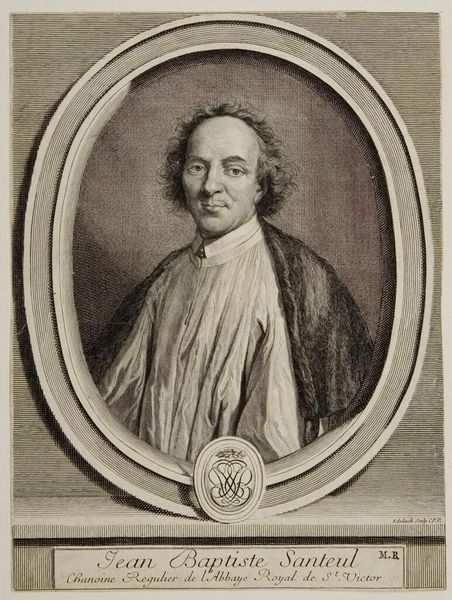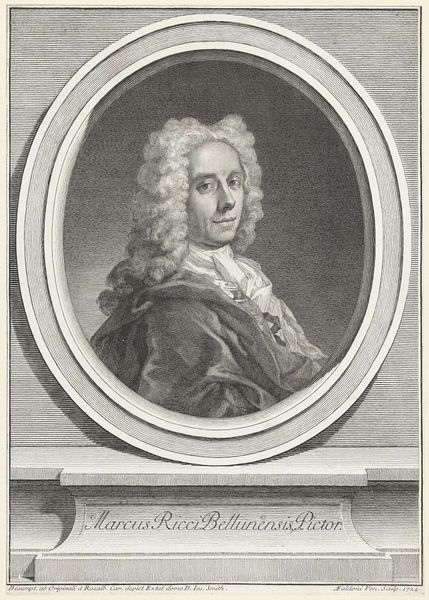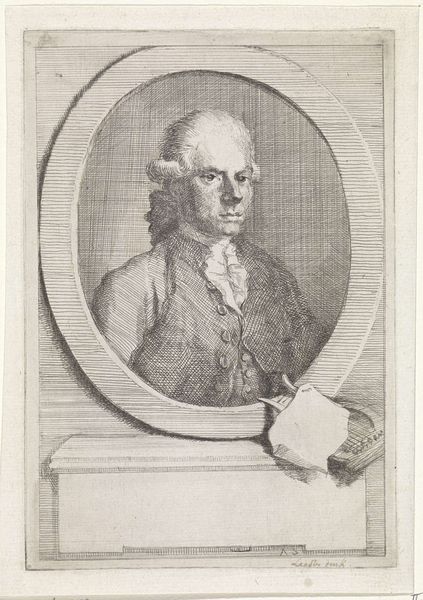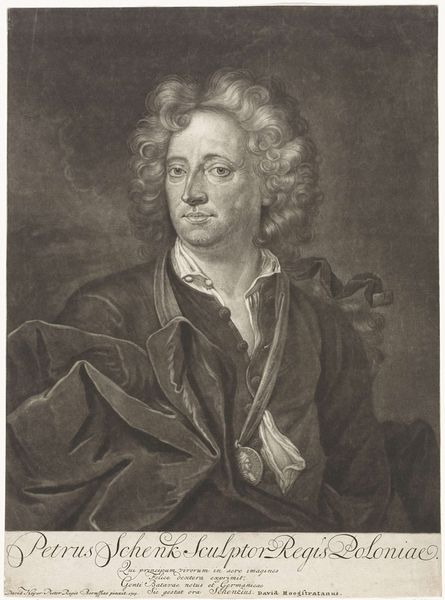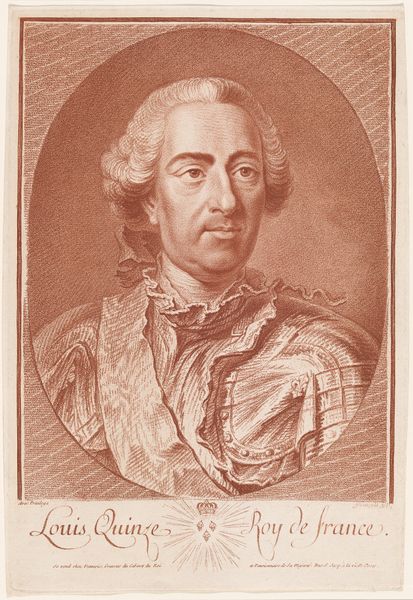
Dimensions: height 129 mm, width 104 mm
Copyright: Rijks Museum: Open Domain
Editor: Here we have Johannes Cornelis Mertens' self-portrait from 1782, rendered in graphite. It's quite striking how meticulously he has depicted himself, even the frills on his shirt. What strikes you about this drawing? Curator: I'm interested in the graphite itself. Graphite, though appearing humble, facilitated the dissemination of ideas. Before photography, drawings like this were reproduced as engravings, enabling wider circulation of images and knowledge. The 'means of production' if you will, democratizing portraiture beyond the oil-painted elite. Notice the very controlled touch he adopts - perhaps for the reproduction. Editor: So you're saying the material itself impacted the purpose and audience of the artwork? How would this change the artistic world at the time? Curator: Precisely. Consider the labor involved: from graphite mining to paper production, to Mertens' skilled hand, to the engraver's replication. The entire *system* of art changes. Are new workshops born to accommodate engravings? Do new specializations emerge? Suddenly art becomes more accessible through replication. Editor: That’s fascinating! I had never thought about the socioeconomic impacts of something as simple as graphite. Curator: It challenges the Romantic ideal of the solitary artistic genius. This image of Mertens exists because of a whole chain of creation and labor. Understanding that is essential. Editor: So true. I'll never look at a simple graphite drawing the same way again. Thanks for illuminating that! Curator: My pleasure. Now we see more than just a portrait; we see a system of production.
Comments
No comments
Be the first to comment and join the conversation on the ultimate creative platform.
